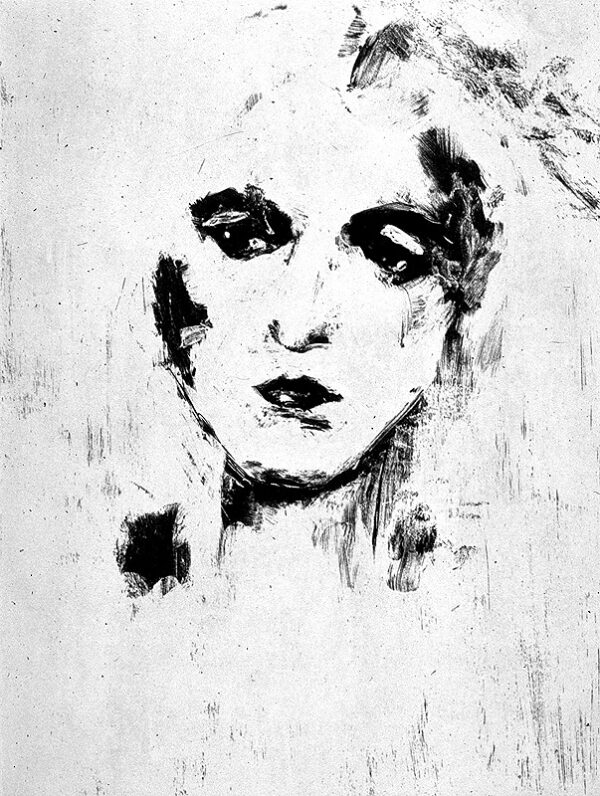
Color manipulated aquatint with spit bite aquatint, soft ground etching and drypoint.
18¾ x 14¾"; 27½ x 22½". 40.
Crown Point Press and Daria Sywulak.
$3,000 fair market value Unavailable

Manipulated aquatint with drypoint.
29¾ x 23½"; 40½ x 30½". 30.
Crown Point Press and Daria Sywulak.
$3,000 fair market value Unavailable

Color manipulated aquatint with spit bite aquatint, aquatint and drypoint.
44½ x 35¼"; 51¾ x 40¼". 40.
Crown Point Press and Daria Sywulak.
$6,000 fair market value Unavailable

Color spit bite aquatint with aquatint, soap ground aquatint and drypoint.
13¾ x 18¾"; 21 x 26". 40.
Crown Point Press and Daria Sywulak.
$3,000 fair market value Unavailable

Aquatint with flat bite etching and drypoint.
17 x 14½"; 26½ x 22½". 30.
Crown Point Press and Daria Sywulak.
$3,000 fair market value Unavailable

Color aquatint with flat bite etching and drypoint.
29¾ x 21¾"; 40½ x 30¾". 45.
Crown Point Press and Daria Sywulak.
$ 3,500 fair market value Unavailable

Color aquatint with flat bite etching, spit bite aquatint, soft ground etching and drypoint.
17 x 14¼"; 26½ x 22½". 30.
Crown Point Press and Daria Sywulak.
$3,000 fair market value Unavailable

Aquatint with flat bite etching and drypoint.
12 x 12"; 30 x 22½". 30.
Crown Point Press and Daria Sywulak.
$2,000 fair market value Unavailable

Aquatint with flat bite etching, aquatint reversal and drypoint.
29¾ x 21¾"; 40½ x 30¾". 30.
Crown Point Press and Daria Sywulak.
$3,000 fair market value Unavailable

Aquatint with flat bite etching and drypoint.
17 x 14½"; 26½ x 22½". 30.
Crown Point Press and Daria Sywulak.
$2,500 fair market value Unavailable

Aquatint with flat bite etching and drypoint.
29¾ x 21¾"; 40½ x 30¾". 30.
Crown Point Press and Daria Sywulak.
$3,000 fair market value Unavailable

Sugar lift and spit bite aquatints with drypoint.
23¾ x 32¾"; 23¾ x 32¾". 35.
Crown Point Press and Daria Sywulak.
$2,500 fair market value Unavailable

Soap ground aquatint with drypoint.
26¾ x 19¾"; 41½ x 31¾". 30.
Crown Point Press and Daria Sywulak.
$3,000 fair market value Unavailable

Soap ground aquatint with drypoint.
36¼ x 31½"; 54 x 40¼". 30.
Crown Point Press and Daria Sywulak.
$4,500 fair market value Unavailable

Soap ground and spit bite aquatints with drypoint.
16 x 11¾"; 30 x 22". 30.
Crown Point Press and Daria Sywulak.
$2,000 fair market value Unavailable

Soap ground aquatint with drypoint.
26¾ x 19¾"; 41½ x 31¾". 30.
Crown Point Press and Daria Sywulak.
$3,000 fair market value Unavailable

Soap ground aquatint with drypoint.
15¾ x 11¾"; 26½ x 20½". 30.
Crown Point Press and Daria Sywulak.
$2,000 fair market value Proof AvailableProof Available

Spit bite aquatint with drypoint.
26½ x 19¼"; 40¾ x 32½". 30.
Crown Point Press and Daria Sywulak.
$2,000 fair market value Unavailable

Hard ground etching with drypoint.
15½ x 12"; 30 x 22". 30.
Crown Point Press and Daria Sywulak.
$2,000 fair market value Unavailable